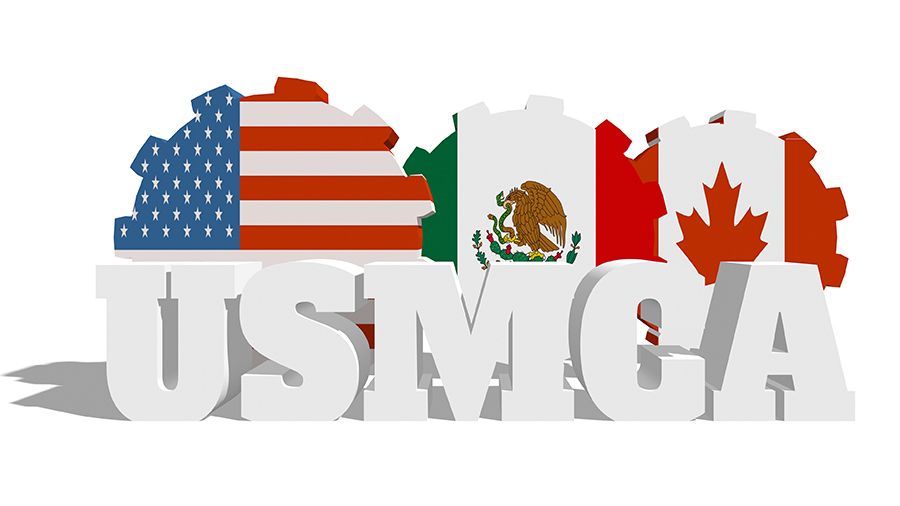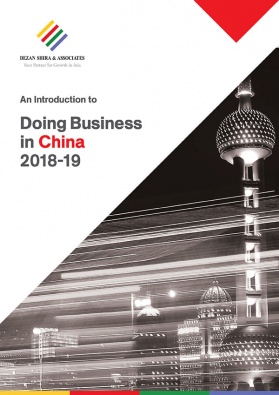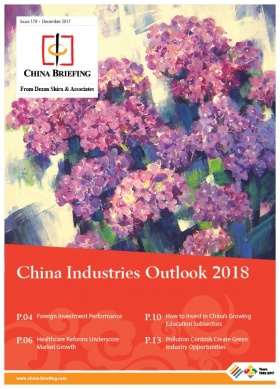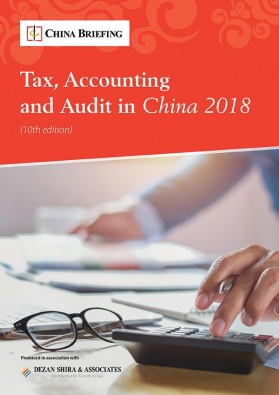USMCA Trade Pact: What it Means for China, Key Stakeholders
After more than a year of talks, the United States, Canada, and Mexico finally agreed to a new trilateral trade deal just before the Trump administration’s self-imposed deadline of September 30.
The new deal, which updates the 1994 North American Free Trade Agreement (NAFTA), is called USMCA – literally spelling out as the United States-Mexico-Canada Agreement.
The decision to drop ‘free trade’ in the pact’s name is telling – key concessions give into American protectionism, strengthen the US position on its escalating trade war with China, and generally push for less free trade.
While the details have been agreed to by negotiators, legislators in each country still have to approve the agreement. If the USMCA is passed, most of the agreement’s provisions won’t come into effect until 2020.
How different is the USMCA from NAFTA?
The short answer is not really. Renegotiating NAFTA was a key election campaign promise for US President Donald Trump, and the new deal is mostly a mix of the old NAFTA and the Trans-Pacific Partnership (TPP), which Trump pulled out of in January 2017.
Yet, a few changes introduced in the USMCA deal have huge implications for the automotive sector, besides provisions affecting the agriculture market, environmental regulation, intellectual property (IP), and digital trade.
More important though is the way the USMCA is upfront in its support of American trade and economic interests over free market principles.
Below we discuss some of the new provisions and Trump’s American pivot, which could affect trade partners around the world.
US veto power targets China
Most eyes have been on the inclusion of Article 32.10 in the USMCA deal, which lays out the consequences of negotiating an FTA with ‘nonmarket economies‘ – which most read as a code word for China.
What this means is that if either Canada or Mexico want to negotiate a trade agreement with China, they must inform the US three months prior. In case a bilateral FTA gets signed with China, any of the three trade partners could terminate the USMCA with just six months’ notice.
Many are looking at this ‘us or them’ clause as more symbolic than substantive.
Article 2205 of the previous NAFTA agreement already allowed any signatory to withdraw from the agreement with six months’ notice. Likewise, Article 34.6 of the USMCA also allows any country to withdraw from the USMCA with six months’ notice without needing justification.
Further, both Canada and Mexico are not anywhere close to signing such an FTA with China. While Canada, in particular, has explored the possibility of signing an FTA with China, both countries share many of the same grievances as the US. Mexico is also keen to strengthen its position as a cheap manufacturing and sourcing base, and potential alternative to China.
USMCA tightens country of origin rules, introduces minimum wage rule
The USMCA zeroes in on the automotive sector. Under the new deal, cars and trucks must have 75 percent of their components manufactured in the US, Mexico, or Canada to qualify for zero tariffs. The limit was 62.5 percent under NAFTA.
This will require automakers selling to North American consumers to stop sourcing some parts from cheaper destinations in Asia, including China, Vietnam, and India – to avail of tariff benefits, significantly adding to final market costs.
Further, a minimum wage rule has been imposed on the auto sector for the first time. The USMCA demands 40 to 45 percent of auto manufactures be produced by workers who earn at least US$16 an hour by 2023. Borrowing from the TPP, the USMCA will allow each country to sanction the others for labor violations that impact trade – though the process is quite complex.
In any case, the wage and country of origin rules disincentivize investment and production in Mexico (or China or Vietnam for that matter), where lower pay scales and cheap manufacturing have long resulted in the loss of US jobs and plants – something the Trump administration hopes to end.
At the same time, such higher wage standards and sourcing constraints will make North American cars less competitive in the international market; costlier production will directly result in higher prices of cars and trucks. This may reduce their exports to the rest of the world as automakers in Asia or Europe are not subject to American rules of origin.
If such a scenario were to materialize, foreign automakers would not be hard pressed to diversify their investments in non-North American markets. China, for example, is still the largest car market in the world, despite recent slowdown in sales. In fact, market analysts point to China’s maturing consumer standards, where interest in buying electric cars, German luxury, and Japanese brands continue to be leading trends.
IP protections and digital trade
The USMCA extends the terms of copyright from 50 years beyond the life of the author to 70 years beyond the life of the author.
In the biopharmaceutical sector, the new deal increases protections for biologics from eight years to 10 years – which will protect new drugs from competition from generic, cheaper manufacturers.
Finally, the USMCA introduces provisions targeting the digital economy – a major revision on the two decades-old NAFTA.
It includes no duties on products purchased electronically, such as music downloads or e-books and protections for internet companies so that they are not liable for content produced by users on their platforms.
Protection for governments from investor lawsuits
Chapter 11 in the original NAFTA enabled investors to sue governments over policy changes seen to harm their future profits.
This has been eliminated for the US and Canada; in Mexico it is restricted to a few sectors, such as energy.
The mechanism has been known to be used by companies to challenge health and environmental regulations.
US steel, aluminum tariffs to continue
Section 232 is a trade loophole that the Trump administration has been using to impose steel and aluminum tariffs on all its external competitors, including allies – Canada, Mexico, and the European Union, among others. This loophole will remain in the USMCA.
Section 232 basically allows the US to block imports of materials that are critical for national security and to ensure that the country has reliable supplies in the event of a war. Given that logic, the tariff impositions make little sense – the US gets much of its steel from its allies.
What the clause does is give legal heft to the Trump administration’s ability to impose such tariff protections on its domestic industries.
Sunset clause introduced
The USMCA contains a ‘sunset clause’ – the terms of the agreement will automatically expire after 16 years unless it is explicitly extended by the parties. The US initially wanted a five-year sunset clause.
Additionally, the deal will be reviewed every six years, at which point the US, Mexico, and Canada can decide to extend USMCA.
USMCA still needs to get approved
The USMCA pact must get approved by lawmakers in all three countries for it to come into effect. If there is push-back from any of the signatories, the deal might end up at an impasse.
The coming November will see mid-term elections in the US, which might shift party representation in Congress. Mexico will soon see a new government as outgoing president, Peña Nieto, leaves office on December 1.
Meanwhile, Canada’s concessions to the US on agriculture and steel and aluminum tariffs will likely become campaign issues as the country heads into an election year in 2019.
About Us
China Briefing is produced by Dezan Shira & Associates. The firm assists foreign investors throughout Asia and maintains offices in China, Hong Kong, Indonesia, Singapore, Russia, and Vietnam. Please contact info@dezshira.com or visit our website at www.dezshira.com.
- Previous Article The EU Commission’s “EU-Asia Connectivity Strategy” Omits China
- Next Article How to Repatriate Profits from China – New Issue of China Briefing Magazine










